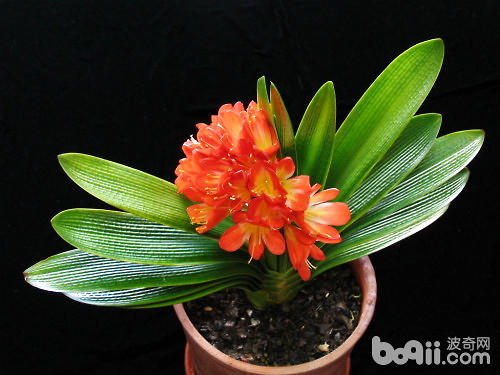How to prevent chrysanthemum leaves from yellowing and falling off?
Yellow leaves and defoliation often occur in the growth process of chrysanthemum, which is mainly caused by insufficient fertilizer and water, slow plant growth, too wet basin soil, excessive fertilization, splashing fertilizer on the leaves and contaminating the leaves, as well as the invasion of diseases and insect pests. The prevention of yellow leaves and defoliation of chrysanthemums should mainly pay attention to the following aspects:
First, fertilizing. When applying fertilizer to chrysanthemum, it is necessary to apply more thin fertilizer and thicker after seeing the bud. Topdressing can be done with rotten bean cake, 2 parts of sesame oil dregs and 8 parts of water, once every 7-10 days. After budding, 1 part of fertilizer plus 3 parts of water, and then mixed with a small amount of potassium dihydrogen phosphate for topdressing. After application, rinse away the fat and liquid on the leaves with clean water in time.
Second, watering. The watering of flowers is based on the principle of "dry soil is watered, not dry is irrigated, and watered thoroughly". The summer climate is hot, the basin soil is easy to dry, it should be fully watered, but it can not be watered at noon, enough water can be watered in the morning, and the basin soil can be watered again in the evening. Pour water into the side basin after the rain. Avoid splashing dirt on the leaves when watering.
Third, to control diseases and insect pests, the main disease that harms the leaves of chrysanthemum is leaf blight.
The method of prevention and control is to spray 500 times wettable ammonium or zinc every 15 days from spring. 40% omethoate can be sprayed on chrysanthemum aphids and 1000 times of propargite on red spiders.
The causes and control of yellowing and shedding of chrysanthemum leaves according to the personal experiment of Xiaobian raising chrysanthemum, generally speaking, fertilizer and water should not be stained on the branches and leaves of chrysanthemum during fertilization, otherwise the leaves will wither and yellow. after fertilization, spray water should be sprayed on the plant of chrysanthemum in time to wash away the contaminated liquid from the leaves to prevent the leaves from yellowing and falling off. In chrysanthemum planting, the phenomenon of yellow withering and shedding of the lower part of the leaves appears, that is, the shedding of foot leaves, commonly known as "barefoot". Foot leaf shedding is a common and headache problem for chrysanthemum farmers, so there is a saying that it is easier for chrysanthemums to grow flowers than leaves. The cavitation of the lower stem of chrysanthemum will not only affect the quality of flowering, make the plant top-heavy, the center of gravity unstable, but also affect the overall ornamental effect, so it is necessary to make chrysanthemum reach a higher aesthetic standard. The lower foot leaves must be preserved and nurtured. To prevent the foot leaves of chrysanthemums from falling off, we should first find out the cause of the foot leaves falling off. And then through proper cultivation and management to achieve the purpose of preserving foot leaves. The causes of foot leaf shedding are internal and external causes. Because the cuttage is too early, it takes about a year from cuttage to flowering, and the lower part of the stem is woody when it blossoms. At this time, the growth regulatory substances in the old leaves have changed, which is the internal cause of the "barefoot" of chrysanthemums. The cultivation environment is not suitable, such as improper watering, excessive or insufficient fertilization, excessive and concentrated fertilization in summer, fertilizer or mud water splashing the leaves. The harm of diseases and insects is the external cause of "barefoot" of chrysanthemum. In view of the above reasons, in order to prevent the yellowing and shedding of chrysanthemum leaves, the following methods can be taken: (1) appropriately postpone the cutting period. Chrysanthemum leaves have a certain life span, but also have metabolism, only to keep the foot leaves within the life range of normal growth, in order to ensure that the foot leaves do not come off. Under the premise of ensuring the florescence and modeling requirements, the time of cutting seedlings can be postponed, such as 5-7, the occurrence of "barefoot" can be greatly reduced. (2) rational watering and fertilization. Prevent the basin soil from getting too dry and wet. The flower proverb has the saying of "dry pine and wet chrysanthemum", which shows that chrysanthemum likes wet soil conditions, and too dry soil will cause leaf wilting. Although it can recover after watering, it can easily lead to the yellowing and shedding of foot leaves. At the same time, chrysanthemum also avoid waterlogging, when the basin soil is too wet or stagnant water will inhibit root respiration and absorption, resulting in serious shedding of foot leaves. Therefore, when cultivating chrysanthemums, attention should be paid to: first, to prepare good cultivation soil and cushion the pots; second, to avoid stagnant water in the basin, to prevent rain in the rainy season, and to raise the flowerpots. (3) adopt the shallow method. That is, when the chrysanthemum seedlings are potted, the potted soil is only 1 / 3 of the pot height, and the potted soil is gradually added with the plant height in the future, so that the leaves on the potted surface remain in a more robust state. The defoliated basal branches can also be buried in the basin soil at the time of final planting. (4) keep foot leaves clean. When watering or fertilizing, you should avoid splashing the leaves with fertilizer or muddy water, because the surface of chrysanthemum leaves is fluffy, which will cause the withered and yellow foot leaves after being polluted by fertilizer or muddy water. When watering, fertilizing or raining, the basin soil splashes the leaves, should spray water to wash the leaves in time, so as to avoid the foot leaves yellowing and falling off. (5) timely prevention and control of diseases and insect pests. When chrysanthemum is attacked by diseases and insect pests, it is easy to cause the leaves to yellowing and fall off, so it should be controlled by spraying in time. How to solve the yellowing of chrysanthemum leaves?
Chrysanthemum is a widely used flower, whether it is home or courtyard and other places, chrysanthemum decoration is still very common, chrysanthemum leaves yellow how to do? Let's take a look at the solution to the yellowing of chrysanthemum leaves.
1. Soil alkalinity.
Chrysanthemum likes fertile, permeable and acidic soil. The soil with a high PH value of 7.5 can easily lead to the defoliation of the lower part of chrysanthemum or yellowing of the leaves of the whole plant. Solution: often pour fermented rice washing water or Rain Water.
2. Too much watering
Too much watering leads to long-term wet soil water, poor air permeability and even partial fibrous root rot, showing that the young leaves of chrysanthemum are dark yellow and dull, and the new shoots shrink. Solution: the principle of watering chrysanthemum is that the pot soil is dry, not dry and thoroughly. Summer climate is hot, basin soil is easy to dry, should be fully watered, but can not be watered at noon, fully watered in the morning, dusk basin soil dry can be watered again. Pour water into the side basin after the rain. Prevent soil from splashing on the leaves when watering.

3. Too little watering
Because the chrysanthemum has not been watered or dehydrated for a long time, the new leaves have normal leaf color, but the lower leaves gradually dry yellow and fall off and age. Solution: adequate watering is needed during the growth of chrysanthemums, and the basin soil can be watered again after drying, but pay attention to not watering when the sun is strong at noon.
4. Excessive fertilization
Excessive fertilization of chrysanthemums can also cause yellowing of leaves. Solution: chrysanthemum fertilization should master more thin fertilizer, after seeing the bud can be slightly thicker. Topdressing can be done with rotten bean cake, 2 parts of sesame oil dregs and 8 parts of clear water, once every 710 days. After budding, one part of fertilizer plus 3 parts of water and a small amount of potassium dihydrogen phosphate can be used for topdressing. After application, rinse away the fat and liquid on the leaves with clean water in time.
5. Harm of leaf blight
Leaf blight infection is one of the causes of yellowing and wilting of chrysanthemum leaves, which mainly harms the flowers and leaves of chrysanthemum. Solution: spray 500 times wettable ammonium or zinc every 15 days.
- Prev

Why don't magnolia blossom?
Why does the orchid not blossom? when it comes to the flowering age, the orchid can not blossom normally, mainly for the following reasons: too much ① nitrogen fertilizer, less phosphorus and potassium fertilizer, and no bud when the bud blossoms. Excessive sunlight in summer in ② has an adverse effect on the flowering of pregnant buds. ③ is placed in a place where the temperature is too high in winter
- Next

Why don't peony blossom?
Why does peony not blossom, peony is one of the precious flowers in our country, deeply loved by our people, but the peony bought often does not blossom, what is the reason? The stems and leaves of Paeonia lactiflora were withered and yellow from August to September, which indicated that the underground buds formed and entered the dormant period, when the soil temperature was still suitable for root growth.
Related
- Fuxing push coffee new agricultural production and marketing class: lack of small-scale processing plants
- Jujube rice field leisure farm deep ploughing Yilan for five years to create a space for organic food and play
- Nongyu Farm-A trial of organic papaya for brave women with advanced technology
- Four points for attention in the prevention and control of diseases and insect pests of edible fungi
- How to add nutrient solution to Edible Fungi
- Is there any good way to control edible fungus mites?
- Open Inoculation Technology of Edible Fungi
- Is there any clever way to use fertilizer for edible fungus in winter?
- What agents are used to kill the pathogens of edible fungi in the mushroom shed?
- Rapid drying of Edible Fungi

